Lexus crossovers cross over, add technology
Filed under: Equinox, Weekly test drives, Autos
By John Gilbert
As we gravitate — some would say “hurtle” — from sedans to SUVs for our vehicles of choice, we have now reached a point that obscures the very definitions of those vehicles. Take Lexus, for example, and think about whether you can identify and tell the difference among the Less RX, the Lexus UX, the Lexus GX, the Lexus NX, and the Lexus LX?
I didn’t think so.
On the off-chance you can, then let’s add in the Lexus GS, Lexus ES, Lexus IS, Lexus LS, Lexus LC, and Lexus RC. The above group are all, officially, SUVs, while the lower group is made up of cars.
We are not here to discriminate about model nomenclature, though. We’re here to describe a couple of them and how the compare, if it’s possible to differentiate. First off, Lexus is the upscale or luxury segment of Toyota, and nearly all Lexus models began life as a fancy version of a more mainstream Toyota. As years passed, Lexus got more of the upscale stuff, while Toyota absorbed the more mainstream and less expensive equipment.
I had the chance to road-test a couple of these vehicles, for a week each, and they came back to back. First came the 2020 Lexus NX 300 F Sport , a compact SUV, painted Cadmium Orange, a rich but flashy color that exacts a $595 addition to help push the base price of $40,360 to a final sticker of $51,910. Next came a 2019 Lexus IS 350 AWD sedan, painted Ultrasonic Blue Mica — also worthy of a $595 option price, helping boost the base price from $44,095 to $51,875.
Imagine that! With all the features and add-ons, these two vehicles wind up $35 different, even though they are intended for different worlds of driving. Or, are they? Both are all-wheel drive, both have different but potent engines, different transmissions, and both are F-Sport variations with firmer suspension and special features, with one being a low-slung, sporty 4-door sedan, and the other being a quite-sleek compact crossover SUV, also with four doors, and raised a bit for added room and stature.
Here’s my point: If you live in a rural area in snow country, where the county might plow your road in a day or so, you might want the slightly higher stance of the NX 300; if your driving is mostly or all on well-maintained paved roads and you favor a sporty flair to your driving, the IS 350. Both have all the anticipated contemporary safety features, with lane departure warning and assist, rear camera, blind spot monitor, etc.
An interesting evaluation would indicate the SUV handles like a sports car, and the sleek sedan has some of the capabilities of an SUV.
TC Auto Show to feature Truck Summit
Filed under: Equinox, Weekly test drives, Features, Autos, Uncategorized
By John Gilbert
If you are able to attend any of the world’s major auto shows — such as Frankfurt, Geneva, Paris, Japan, or the Big Four in the U.S., Los Angeles, Chicago, New York and Detroit — the magnitude is amazing. But that doesn’t mean the smaller population centers are any less intense in their interest. And most of them aren’t that small.
That interest in Minnesota will ride a new idea, armed with an impressive economic impact study that shows the auto show may have a financial impact on the region of $19 million every year, with a nine-day run that makes its earnings greater than the Super Bowl or the Final Four.
If you don’t care about the huge congestion at the Big Four shows, you might be able to calm down and enjoy the Twin Cities show., which runs from March 7-15.
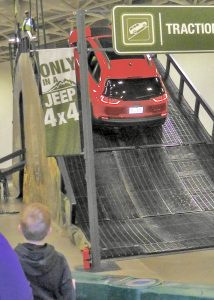
A young enthusiast was mesmerized watching drivers take on the Jeep off-road demonstration at the Twin Cities Show.
My fondest memory of the Twin Cities Auto Show came a few years ago, while taking a pre-opening run through the displays at the Minneapolis Convention Center. There was a Jeep display, where a huge hill had been formed and rides were given to show how steep an incline, and descent, the new Jeeps could handle, which was better than some state fair thrill rides. As I watched the demonstration, there in the foreground was a kid, exactly the kind of kid who might spend his spare time playing with a model truck in his backyard sandbox, and he stood there, transfixed as he gazed at the Jeep going up and over.
That was a couple years ago, and I should have realized then exactly why our country, and particularly our state, had started on a transition from cars to trucks.
It has happened, of course. And when the Twin Cities Auto Show opens March 7, 2020, the focus will be on its Truck Summit on March 6 to break down the reasons for the shift.
There are a lot of other significant vehicles that will fill the huge site, with particular emphasis on the emerging electric car phenomenon that could change the world’s auto industry. But there also will be dozens of trucks, from Ford, Ram, Chevrolet, Toyota, Nissan, Honda for pickups and all the newest SUVs and crossovers being shown by virtually all manufacturers.
We are fast closing in on the start of the U.S. major auto show season, which begins later with the Los Angeles show in late November, and continues with Chicago in February, New York in April, and Detroit in June. The Detroit date is the major departure, because it always has been in early January, but has shifted to summertime.
A lot of people in the auto industry are curious and anxious about that shift, moving the traditional mid-winter Detroit exposition to summer, and the anxiety is because a number of hard-core auto observers are concerned that the once-heralded major shows have faded in the intensity of interest by both auto makers and consumers. The question for us in Minnesota is, where does all that leave us, here in flyover land?
Mini tradition endures, even in “Maxi” form
Filed under: Weekly test drives, Autos
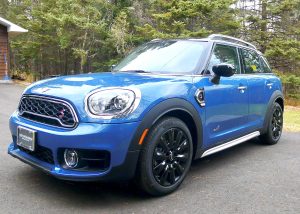
The 2020 Mini Countryman is larger and more powerful but proved its kinship with our 2007 model during an impromptu road-test.
By John Gilbert
Ever since I was a little kid, our family gave our cars nicknames. Betsy is the one I remember best, for a sturdy old 1946 Dodge . Since then, I’ve always had relationships with cars I’ve owned, some great, some not so great. For the last 10 years, however, the most memorable car we’ve had has been a little red 2007 Mini Cooper.
It has been so loyal, trustworthy, and dependable, it could earn a Boy Scout endorsement. I last wrote about how it carried my wife, Joan, my older son, Jack, and me home from the Twin Cities airport through the worst overnight blizzard of the winter, to the safely and securrity of the Gilbert Compound, up on the hill just up the North Shore of Lake Superior from Duluth. The joke was on us, to a point, because I couldn’t readily see the tiny switch on the other side of the floor shift lever and was unaware the switch indicated that the traction control was off. I just thought the icy undercoat of all the snow made our trek extremely slippery and hazardous. All the way from the Twin Cities, slithering around on the freeway in whiteout conditions, my adrenaline on red-alert, and we made it! Imagine how easy it would have been had the traction control been turned on!
I’ve test-driven a couple of Mini Coopers in the decade since we bought that Mini with only a few miles on it, and I’ve been impressed. The 2007 model came out a year after BMW had taken ownership of the proud marque and smoved its production to Europe, with a BMW 4-cylinder.My wife, Joan, has pampered that car, hand-washing it to be put back in the garage. Next time I see it, she’ll be hand-washing it again. It took a lot of convincing to get her to allow regular or mid-grade gas into it, instead of the premium she prefers.
As it turned out, our 2007 Mini secured for us a few days in a 2020 “Mini Cooper S Countryman, ALL4,” courtesy of Motorwerks BMW in the Minneapolis suburb of Golden Valley. There is no dealership in Duluth, so we make periodic trips to Motorwerks when we need to give our Mini factory scrutiny, if it can’t be handled by Foreign Affairs in Duluth. We didn’t want to leave our Mini with a babysitter, even a factory-supported babysitter, but we agreed to swap it for a 2020 test-drive for a few days. Here’s why:
The Mini has the weird little electronic ignition switch and door key. You hit the tiny edge of the key fob to unlock or lock the two doors, and then you insert the fob into a little slot on the dash, next to the push-button to start the car. Or shut it off. Our key fob has taken a beating over the decade, and we only had one.
Joan, who does most of the Mini driving because I’m usually in test-drive vehicles, also likes to do work around outside our rural hilltop home, and she was digging around one day in July and got some honest dirt on her jacket. When she came in, she tossed the jacket into the washing machine with the next load. Came out clean as a whistle. And so did the Mini key fob, which happened to still be in the pocket of her jacket.
We agreed that going through the washing cycle was probably not on the list of accepted maintenance tricks for that key fob. Joan carefully dried it out, opening it and using a hair dryer, and bought it a new tiny battery, and we tried it. Hitting the little switch made a meaningful click, but would not unlock the doors or the hatch. it would, however, start the car. Strange. When we hit the lock part of the switch it worked. Too well. We stood there, marooned, with the key fob in hand and the Mini parked in the garage in its well-scrubbed red paint, and its doors and hatch locked. We had no choice but to ultimately call AAA. Impressively, they had a fellow at our garage door within minutes, and he pried his way to slightly open the window and reach a long rod inside the Mini to unlock the door.
Then we found a quirk in the Mini’s personality, fortunately when it was still warm enough outside that we had the driver’s window open. If you very carefully left the doors unlocked, when you walked away it might lock itself. We left the driver’s door window open 4 inches so we could reach inside without calling AAA again. You might even hear it click from 30 feet away, and feel thankful the window was slightly open.
We also knew we would have to get set up with a reconfigured or new switch, so we tried everywhere, but everyone told us it could only be done at a Mini dealership. We made an appointment at Motorwerks, which I had to cancel, and they said not to worry, we could just drive up and have it taken care of.
It became our ritual to leave the driver’s side window down those 4 inches — just enough to fit my forearm through to reach in and unlock the door with the inside latch. We figured we would have the switch reconfigured, but it wasn’t that easy. To reconfigure the key, we had t0 go to a dealership, and have your title, driver’s license, credit card, and all the meaningful information required to, I suppose, change citizenship or travel to Canada and return some day. We had a section of old carpeting we carried on the floor of the back seat, so that if it rained, I could drape the grippy bottom of the carpet piece on the roof and let it hang over the open part of the window to keep it dry inside. You could drive it anywhere, but if you closed the window, you realized the importance of reopening it before exiting. So we fixed a little stick-on note onto the door as a reminder.
Niro requires no fiddling to electrify driving
Filed under: Weekly test drives, Autos
By John Gilbert
If you have an odd sense of humor, you can use it to fool and confuse your friends when you’re driving a Kia Niro EV. Park it in a parking lot and ask if anyone can help locate the gas filler. They can walk around the car, several times, but they won’t find one. There isn’t one.
Then ask if any of them hear anything unusual as you drive away. Hit the gas pedal and Zap! You have accelerated away. When you come back, they will tell you they didn’t hear anything odd, because they didn’t hear anything at all. There is no sound, because there is no gasoline engine. The Niro EV is pure-electric, going beyond the hybrid Niro and plug-in hybrid Niro.
The Niro is Kia’s newly introduced compact SUV, sort of. It looks like a crossover SUV, it has the room of a compact crossover SUV, which it resembles far more than any rank-and-file car. The major hint is the terminology “EV.” That stands for Electric Vehicle. So there is no place for a gas filler, because there is no gasoline engine under the hood.
It’s not a Tesla, or any of those exotic, $100,000-plus luxury vehicles. It is an under-$50,000 wagon that looks like a compact SUV, which aims to show us where our cars of the future are heading. It’s “fuel economy” figure on the sticker shows 123 miles per gallon city, 102 highway, or 112 MPGe combined. The lower-case “e” after MPG stands for “electric.” It is a symbol of a changing world, which is fast approaching.
The Niro is silent-running, and when you switch it on, don’t wait for an engine sound, just look for the little sign on the instrument panel that says “ready to drive.” Switch the rotary knob on the console to “D” and you’re off. There is also an “R” indicator to the right, and an “N” for neutral, and the little round circle with a “P” on it in the middle of the shift knob is for park. When you stop, or park, make sure you hit the P, and you might want to make sure it is shown on the instrument panel, or the silent-running Niro might go home without you!
The Niro is very comfortable for four or five, and it is both quick and good-handling both in city driving or cruising on a freeway, where you are amazed at how quick it is, and pleasantly surprised at how easy it is to hear conversations, or the fine audio system, because there is no engine noise.
The Niro seems to be facing its own identity crisis, possibly trying to decide if it is a luxury car, a sporty car, or an SUV. Think I’m exaggerating? Motor Trend runs an annual issue with capsules showing all the new cars, and a different issue showing all the new SUVs. I checked it out for the Niro among the small SUVs, but it wasn’t there. Then I pulled out the car issue, and, sure enough, Motor Trend showed the Niro among the cars. There are other compact crossovers without all-wheel-drive that don’t get insulted by being placed with cars, but the Niro seems OK with it.
My appreciation of hybrid vehicles has been increasing at about the same rate that coordinated gas-electric hybrids have been moving into increasingly prominent roles in the auto industry. Knowing that the gas engine will recharge the electric motor is comforting, but I have had trouble getting my hands on anything from one elusive segment, up on the great North Shore of Lake Superior, and that is an EV — a pure electric vehicle.
Brief drives in vehicles such as the Nissan Leaf, left a strong impression, although its earliest models had a modest range of 20-something miles. There were others, too, but the manufacturers who build pure electric vehicles, with real-world driving range capabilities, pretty much ignore what we endearingly call “flyover land.” The reason is obvious on a couple of counts.
One, the expense of installing rapid charging stations naturally placed them in high-population areas like Los Angeles, or San Francisco, or the New York-Boston area of the East Coast. Maybe Florida. Second, it gets cold in the Great White North, really cold, and that can knock the starch out of the driving range of battery packs.
But EV-makers shouldn’t overlook the Upper Midwest. I keep writing that we’re all headed toward a world of electric-powered cars, and we’ve done well with hybrids and plug-in hybrids. Not only that, but we have a few EV charging stations in Minnesota — mostly in the Twin Cities of Minneapolis-St. Paul, but a few in Duluth, right up here on the often-freezing tip of Lake Superior.
When I was notified that a vehicle would be delivered from a press fleet operation in Chicago, and it would be the Kia Niro EV, they informed me that it would be delivered to my house up the hill from the North Shore in rural Duluth, in an enclosed trailer.
Sure enough, the vehicle was a 2019 Kia Niro EV, in EX Premium trim. That’s a lot of suffixes, but the EX and Premium tags just denote various creature comfort packages on the particular vehicle coming my way. The car is Kia’s version of a similar drivetrain in the Hyundai Ionic, and more recently the Hyundai Kona compact SUV.
The Niro resembles a compact SUV, but it really is an example of how the South Korean partners are now differentiating their models. The Ionic is a slick compact sedan with large-car interior space, while the Kia designers took the same platform and built it up into an SUV-style vehicle using the same powertrain.
That powertrain is a 64 kilowatt-hour Lithium-Ion Polymer battery pack, built low and streamlined by LG Chem, a South Korean electronics innovator, and it produces 150 kilowatt-hours — or 201 horsepower — through an AC synchronous motor. It also has a 7.2 kilowatt on-board charger, and a DC fast-charge port for 480 volts in the front grille. It is concealed behind a small horizontal trap door on the end of what looks like a trim bar. Pop it open, pull the charge cable out from its receptacle under the hatch, and you can plug it into a normal household outlet, or a high-voltage outlet, or a special quick-charge outlet if you can locate one.
Range Rover Sport offers 575-HP kick
Filed under: Weekly test drives, Autos
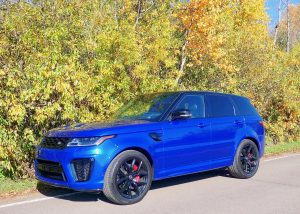
Range Rover Sport in Estoril Blue stood out against the autumn leaves, before the gales of October blew the colorful foliage away.
By John Gilbert
Dating back to when Land Rover’s Range Rover was a British brand of over-built SUVs from back before “SUV” became a working name, back when it was powered by a fun but less durable ‘Buick V6, it was hard to test-drive any Range Rover without being thoroughly impressed. The company’s staff of off-road adventurers could set up challenging off-road courses ir send you around Iceland or up to the Rocky Mountain continental divides to impress you with the vehicles’ prowess.
Over the last 20 years or so, I’ve been favorably impressed with all of them. Some more than others, of course. But now I’ve got a favorite — the Range Rover Sport SVR.
The Land Rover Discovery Sport, Land Rover Discovery, Land Rover Range Rover, Land Rover Range Rover Evoque, Land Rover Range Rover Velar, and the Land Rover Range Rover Sport all work together to make up the current exceptional stable of road-worthy — and off-road-worthy — SUVs. Different engines, different capabilities and different price ranges separate them from each other. The range goes from $39,000 for the compact Discovery Sport to a whopping $209,000 for the Land Rover Range Rover — which deserves both names, and then some.
The Range Rover Sport, however, stands tallest among the breed for those who love more sportiness than luxury while charging off the road to make their tracks where neighbors and others can be impressed but may not be able to keep up with your adventurousness. For those onlookiers, the Range Rover Sport stands out in plain sight, on the road.
You can buy a Range Rover Sport for $67,000 if you select the 2.0-liter turbo four with its hybrid boost, or a bit more for the 3.0-liter turbo-diesel. or you could step up to either of a pair of 3.0-liter supercharged V6es. But the pick of the litter is one of the two 5.0-liter V8 engines, with your choice of power. The first is a 518 horsepower, 461 foot-pound engine, which would be more than satisfying, if only the monster version didn’t exist.
That’s the one that came in my stunning Estoril Blue Range Rover Sport — the 5.0 supercharged V8 SVR, tuned by the corporate Special Vehicle Ops to 575 horses and 516 foot-pounds of torque. That, plus the load of unique equipment, take the $114,500 base price for the Range Rover Sport, and lift it to $131,520.
That’s a lot, but don’t dismiss it until you evaluate what you’re getting. Special Vehicle Ops is a performance oriented group that performs customizing on all things Jaguar or Range Rover. The two are jointly owned by Tata Motors in India, which admires the two British companies and has managed to extract the best from both. After sputtering, so to speak, on their own after being cut adrift by Ford Motor Company, the two were purchased by Tata, which gave Jaguar exactly what it needed — an enormous outlay of engineering money so they could build engines up to the standards promised by their beautiful sports cars and sedans. It only made sense to allow Range Rover to use the precious engines, instead of buying something from BMW, or Ford, or anyone else.


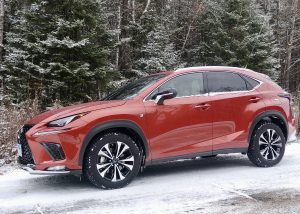
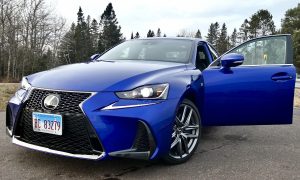
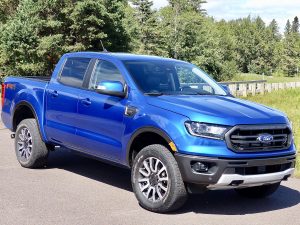
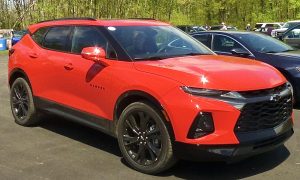
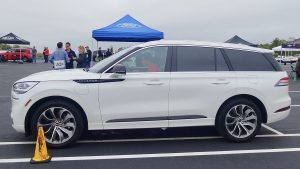
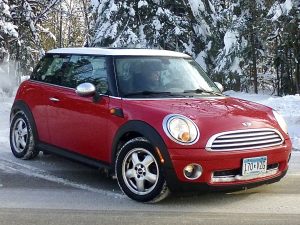
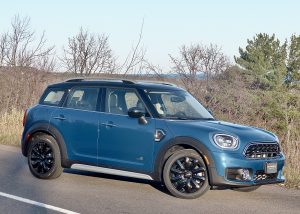

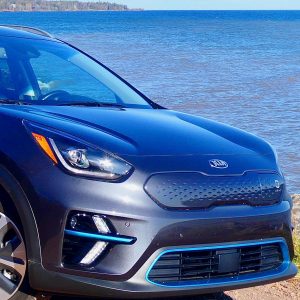
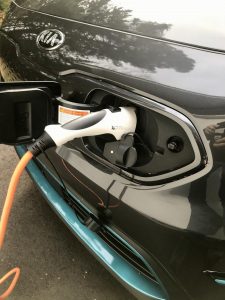


 John Gilbert is a lifetime Minnesotan and career journalist, specializing in cars and sports during and since spending 30 years at the Minneapolis Tribune, now the Star Tribune. More recently, he has continued translating the high-tech world of autos and sharing his passionate insights as a freelance writer/photographer/broadcaster. A member of the prestigious North American Car and Truck of the Year jury since 1993. John can be heard Monday-Friday from 9-11am on 610 KDAL(www.kdal610.com) on the "John Gilbert Show," and writes a column in the Duluth Reader.
John Gilbert is a lifetime Minnesotan and career journalist, specializing in cars and sports during and since spending 30 years at the Minneapolis Tribune, now the Star Tribune. More recently, he has continued translating the high-tech world of autos and sharing his passionate insights as a freelance writer/photographer/broadcaster. A member of the prestigious North American Car and Truck of the Year jury since 1993. John can be heard Monday-Friday from 9-11am on 610 KDAL(www.kdal610.com) on the "John Gilbert Show," and writes a column in the Duluth Reader.